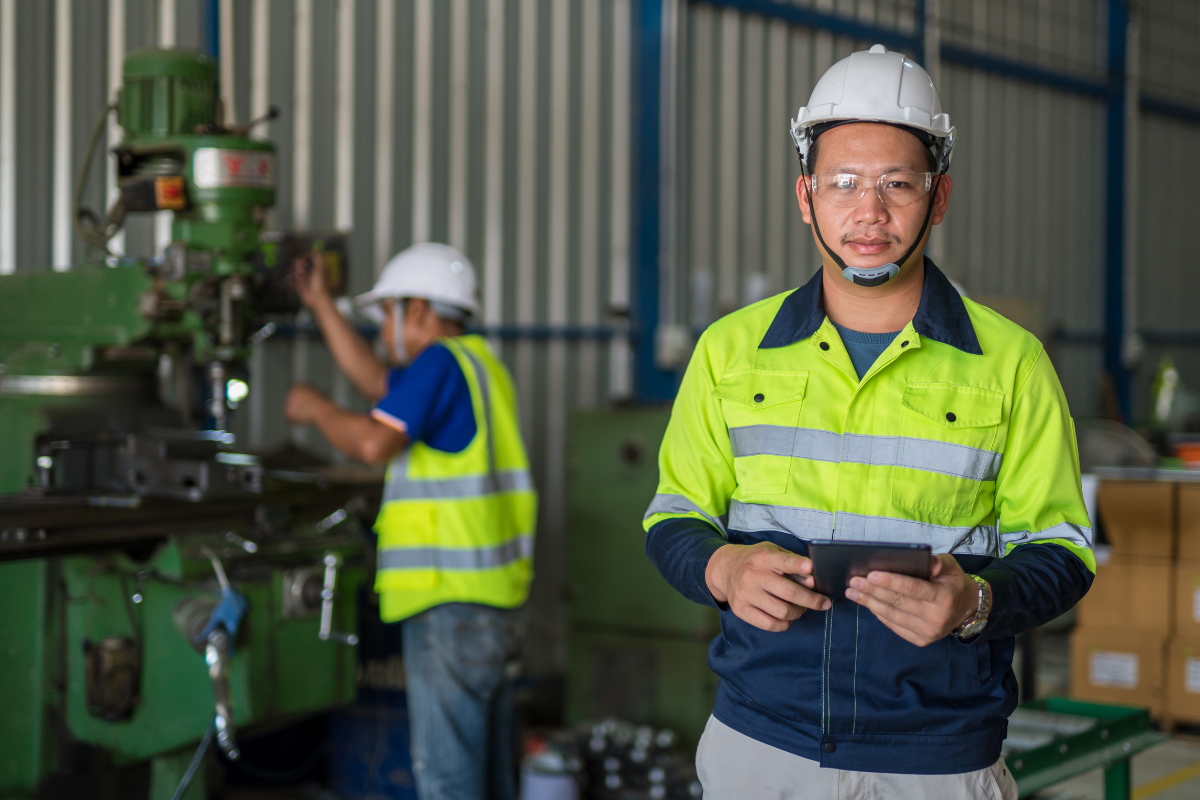A Guide to Compliance and Best Practices
Safety is paramount in any and all industrial environments. When operating machinery with a lot of swiftly moving parts, like drills, the danger is multiplied. A drill is essential for all kinds of processes, but also poses significant risks if not properly managed.
In Australia, strict safety standards are in place to ensure that the risk of injury is minimised. Among these, the Australian Standards (AS) provide comprehensive guidelines for establishing and maintaining safety zones around drilling machines. Adherence to these standards means that workers remain safe and operations run smoothly.
In this article, we’ll explore:
- Key aspects of safety zones around drilling machines
- The relevant Australian Standards
- Practical advice on best practices for compliance
When it comes to workplace health and safety, you need experts in your corner. Your Safety Partners are here to help you remain compliant and efficient in the long term. If you have any questions about the safety zones around drilling machines, get in touch with our team.
What Are Safety Zones Around Drilling Machines?
Safety zones are designated areas around machinery deemed the most hazardous to employees. For drilling machines, these zones help prevent accidental contact with moving parts, flying debris, or other potential dangers.
Safety zones typically involve a combination of physical barriers, visual markings, and safety controls to ensure that operators and bystanders are kept out of harm’s way.
Drilling machines come in various types, including:
- Bench drills
- Radial drills
- CNC (computer numerical control) drills
Each type requires a different approach when defining safety zones, as the size, movement range, and operation vary significantly. Regardless of the type of machine, safety zones are critical to maintaining a secure working environment.

Key Australian Standards for Safety Zones Around Drilling Machines
The key Australian Standards related to safety zones around drilling machines are contained in the AS 4024 series, which outlines the requirements for ensuring safe machinery operations. These standards provide guidance on a range of topics, including:
- Distance required to prevent access to hazardous zones
- Implementation of guards
- Application of emergency stop controls
Several parts of the AS 4024 series are particularly relevant when defining safety zones around drilling machines:
1. AS/NZS 4024.1801:2014 – Safety Distances to Prevent Danger Zones Being Reached by Upper and Lower Limbs
A fundamental standard for establishing safe distances around drilling machines, this section provides detailed measurements that prevent workers from reaching hazardous areas with their hands or feet. Distances are based on human body measurements.
2. AS 4024.1601 & AS 4024.1602 – Guards and Interlocking Devices
The design and implementation of guards and interlocking devices. Fixed and movable guards are used to physically block access to dangerous areas, while interlocking devices ensure that guards remain closed when the machine is in operation. When a guard opens, the machine automatically stops.
3. AS 4024.1901 – Displays, Controls, Actuators, and Signals
Clear and intuitive controls. Ergonomic design of displays and controls ensure visibility and accessibility without needing to enter the hazardous zone. This section also covers the use of visual and auditory signals to alert operators and workers of potential dangers.
Compliance with these guidelines not only promotes safety but also helps businesses meet legal obligations and avoid penalties.
Best Practices for Implementing Safety Zones Around Drilling Machines
Safety zones around drilling machines need to be more than just a barrier or placing warning signs. A well-structured safety zone requires careful planning and ongoing management.
Visual Markings and Barriers
- High-visibility floor markings, safety tapes, and signs
- Barriers such as railings or fencing for additional physical deterrent
Guarding and Interlocks
- Installed on all accessible moving parts
- Regular maintenance for correct functionality
Emergency Stops and Control Accessibility
- Strategically placed outside the hazardous area but in reach of the operator
- Machine stops in case of emergency without needing to enter the danger zone.
Regular Risk Assessments
- Risk assessments identify new hazards through an audit
- Update safety zones accordingly
Safety Training and Awareness
- All workers must be aware of the safety zones and risks
- Regular training sessions and refresher courses

Compliance and Legal Obligations in Australia
In Australia, compliance with the AS 4024 standards is a legal obligation under the Work Health and Safety (WHS) Act. Failure to comply can result in significant fines, legal action, and, most importantly, serious injuries or fatalities.
By adhering to these standards, businesses can ensure that they are:
- Operating within the law
- Protecting their workers
- Demonstrating a commitment to safety
- Reducing downtime due to accidents
- Lowering insurance premiums
Training and Procedures for Safe Operation of Drilling Machines
Effective safety zones require more than just physical measures; they must be supported by strong procedures and thorough training. Standard Operating Procedures (SOPs) should include guidelines on starting and stopping the machine, positioning the workpiece, and handling emergencies.
Training is key to reinforcing these procedures. All operators should receive comprehensive training on the specific risks associated with the machines they use. This training should be repeated regularly to help workers consistently follow compliance.
How Your Safety Partners Can Help
By following the guidelines outlined in the AS 4024 series, businesses can create effective safety zones that minimise the risk of injury and ensure compliance with Australian laws.
At Your Safety Partners, it’s our job to help your business meet all the necessary safety standards. To receive tailored advice on implementing safety zones around drilling machines, get in touch with a certified workplace safety consultant from Your Safety Partners today.
